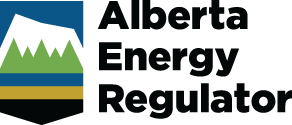Updated June 2023
Figure S5.7 shows marketable gas demand in Alberta by sector and gas available for removal.
Demand
In 2022
Demand for natural gas in Alberta increased by 6.2 per cent from 2021, accounting for 63 per cent of marketable production volumes (194.7 million cubic metres per day 106 m3/d or 6.9 billion cubic feet per day [Bcf/d]).
Higher natural gas demand for electricity generation accounted for nearly all the annual growth. The faster-than-expected phase-out of coal power plants boosted demand in the electricity generation sector.
Forecast for 2023 to 2032
Total domestic demand for natural gas in Alberta is estimated to reach 219.1 106 m3/d (7.8 Bcf/d) by 2032, growing at an average of 1.2 per cent annually. This growth rate is slower than the previous decade when demand increased by an average of 4.3 per cent annually.
Gas demand is anticipated to grow over the forecast in the following sectors:
- Oil sands demand is expected to account for 67 per cent of the growth over the forecast, primarily driven by increased demand from oil sands in situ operations.
- Electricity generation is expected to account for 11 per cent of the growth over the forecast. This demand is driven by increases in cogeneration at oil sands facilities and rising demand for power generation.
- Other sectors combined (residential, commercial, nonoil sands industrial, transportation) will account for the remaining growth in demand. Demand is expected to increase at an annual rate of about half a per cent, driven by economic and population growth and partially offset by energy efficiency gains.
Removals
In 2022
Natural gas removals from Alberta (i.e., transfers to other provinces and exports to the U.S.) increased by 7.4 per cent in 2022, as growth in marketable gas production outweighed increases in domestic use.
Forecast for 2023 to 2032
Removals are estimated to grow moderately over the forecast period to 122.4 106 m3/d (4.3 Bcf/d) by 2032—in contrast with the 3.1 per cent average annual decline over the past decade. This increase in removals will occur as production growth is forecast to outpace increases in domestic demand. Moreover, nondomestic demand for natural gas is expected to increase as many regions in Canada, the U.S., and the rest of the world will likely increase their consumption of natural gas as a transition fuel.
Various projects are underway to improve market access for western Canadian natural gas. Alberta’s natural gas will compete for pipeline capacity with rising production from British Columbia, where producers are also likely to benefit most from liquefied natural gas (LNG) export projects. LNG exports, and an overall increase in market access over the forecast period, will directly benefit Alberta producers via less infrastructure congestion and improved commodity pricing.


